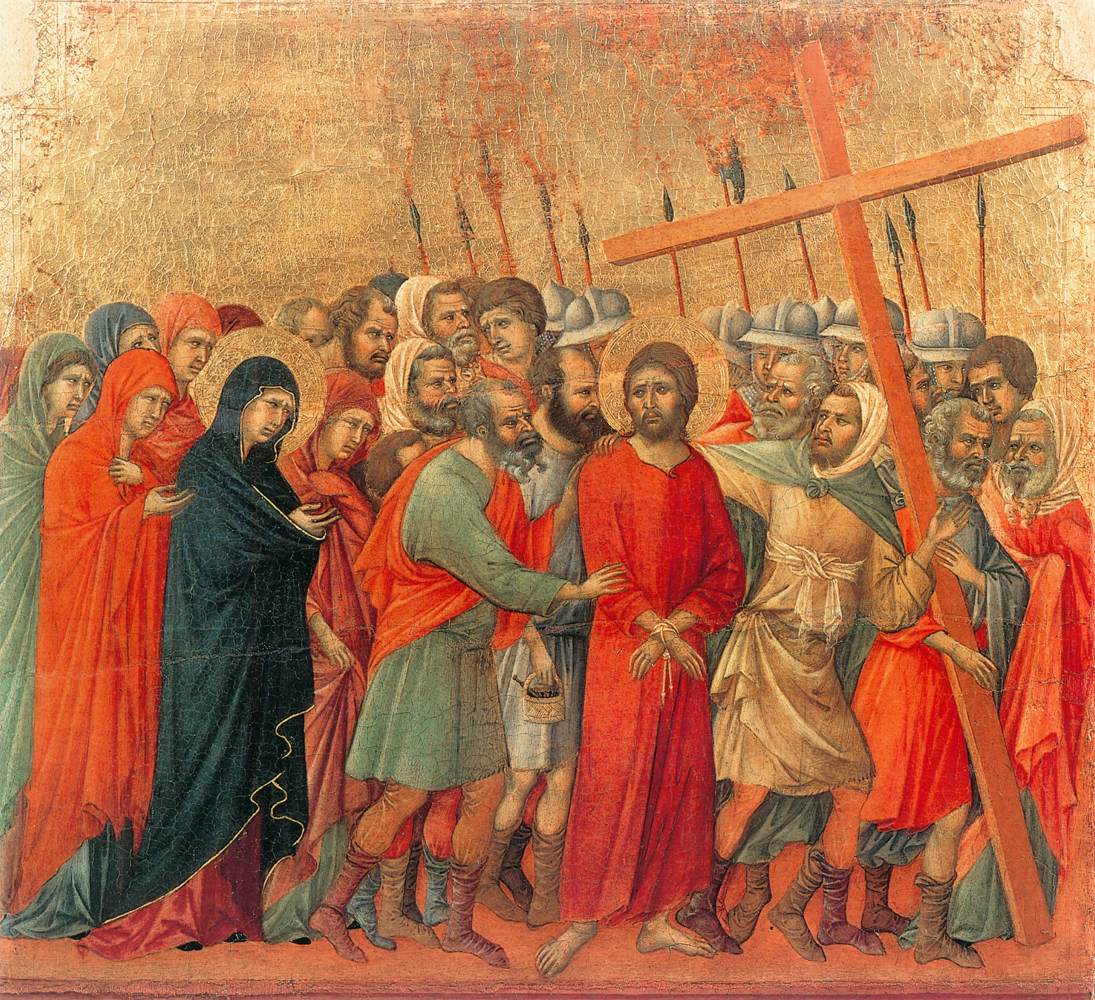Description
The painting "Way to Calvary (scene 19)" by the artist Duccio Di Buoninsegna is a masterpiece of Italian Gothic art of the 14th century. This work of art is one of the most important pieces in the collection of the National Gallery of Art in Washington DC
Duccio's artistic style is unique in its combination of Byzantine and Gothic elements, and can be clearly seen in this painting. The composition is highly detailed and focuses on the figure of Jesus carrying the cross towards Calvary. The characters that surround Jesus are represented with great realism, and you can feel their pain and suffering.
Color is another interesting aspect of this artwork. Duccio uses a range of rich, vibrant colors to create a dramatic and emotional atmosphere. The red and gold tones used on the characters' robes contrast with the dark tones of the landscape, creating a stunning visual effect.
The history of the painting is also fascinating. It was created for the altarpiece of the Siena Cathedral in 1311, and was one of the first works of art to use the perspective technique. The painting was stolen in the 18th century and sold on the black market before being recovered and restored.
A little known aspect of this artwork is that it was one of the first paintings to show Jesus wearing a crown of thorns. This depiction became an iconic image of Jesus' suffering at the crucifixion.
In short, the painting "Way to Calvary (scene 19)" by Duccio Di Buoninsegna is a masterpiece of Italian Gothic art. Its artistic style, composition, color, and the story behind the painting make it one of the most important works in the history of art.

